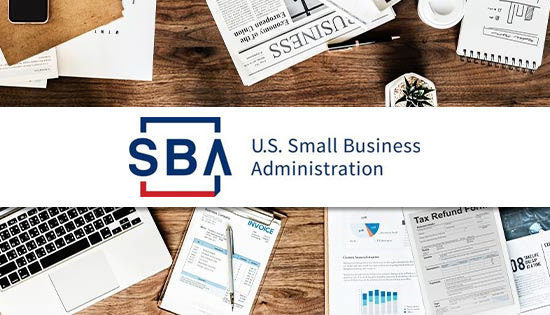ATLANTA – PBS highlights the Okefenokee Swamp’s unique ecology, its importance, and how its future is at risk due to the proposed mining operation on its border.
Release:
Georgia River Network and Okefenokee Swamp Park and Adventures hosted a private, limited-capacity screening of PBS EcoSense for Living’s “Okefenokee Destiny/Everglades” episode last Thursday at the Atlanta History Center. The episode features Georgia River Network Executive Director Rena Ann Peck and other experts who speak to the unique ecology of the Okefenokee, its local and international importance and how its future is at risk due to the proposed mining operation on its border. Following the screening, attendees were invited to participate in a brief Q-and-A with the experts featured in the episode.
PBS chose to highlight the Okefenokee Swamp at a pivotal moment in the wetland’s existence. The Okefenokee Swamp is the largest blackwater wetland in North America, the largest National Wildlife Refuge east of the Mississippi and the nation’s largest aggregate carbon sink. At more than 650 square miles, it is Georgia’s largest biodiversity hotspot and the source of the Suwannee and St. Marys Rivers. It is also a mainstay of Georgia’s tourist economy, with swamp-based tourism supplying $64 million to the local economy and supporting 750 jobs. And yet, despite its protections and importance, concerned stakeholders warn the swamp is far from secure.

Twin Pines Minerals, LLC, an Alabama-based company, has submitted permits to the Georgia Environmental Protection Division (EPD) to mine for titanium adjacent to the swamp. A public comment period is expected to open this summer, but the EPD has already received more than 60,000 letters of opposition to the mine from concerned citizens, scientists, conservation organizations and community leaders.
“The mine would dredge wetlands and dig 50-foot-deep pits into Trail Ridge, below the elevation of the swamp itself,” said Peck. “Trail Ridge helped form the Okefenokee and helps maintain water levels in the swamp and surrounding areas.” The United States Fish and Wildlife Service and independent scientists caution mining could significantly lower the water level of the swamp. “The proposed mine can be expected to increase the severity and extend the length of dry periods in the swamp and the St. Marys River.” says Rhett Jackson, distinguished professor of water resources at University of Georgia.
The “Okefenokee Destiny/Everglades” episode intersperses footage of the swamp’s enchanting ecosystem with interviews with swamp experts and stakeholders. In it the Okefenokee is juxtaposed with the Everglades as a cautionary tale for choosing conservation over restoration. Those featured in the episode that were in attendance at Thursday’s event include Peck, Executive Director of Okefenokee Swamp Park and Adventures Kim Bednarek, Manager of Okefenokee National Wildlife Refuge Michael Lusk, University of Georgia Warnell School of Forestry Professor Rhett Jackson, who has a doctorate in hydrology, and local community leader and owner of Reeds Grocery and Ponderosa Deborah Reed. The episode is available for free public viewing on the PBS website here: https://www.pbs.org/video/okefenokee-destinyeverglades-ppHYsA/

The private screening served as a widening event, bringing new advocates into the fold for Georgia River Network’s work to stop the mine and Okefenokee Swamp Park and Adventures’ work to have the Okefenokee Swamp nominated as a United Nations World Heritage site. Individuals or organizations wishing to support Georgia River Network or send a letter to Governor Brian Kemp asking him to stop the mine, can do so on the organization’s website here: https://garivers.org/protect-the-okefenokee-swamp/.
“We don’t need to risk our exceptional Okefenokee Swamp and the jobs it sustains for this mine, because the commonly found titanium minerals can be found elsewhere,” said Peck. “Georgia River Network is working with many others to protect the swamp from mining by pressing Governor Brian Kemp, Georgia Department of Natural Resources and other key decision makers to deny the mine’s permit.”
For adventure seekers interested in experiencing the 120 miles of intimate paddling paths that form the Okefenokee Swamp’s iconic Okefenokee National Wilderness Canoe Trail, Georgia River Network recently released the Georgia River Guide mobile app, a free river trip planning tool that features information on the state’s more than 30 water trails. Loaded with information about access points, trail mileage, points of interest, nearby amenities and more, the Georgia River Guide app offers users what they need to know to safely and easily explore hundreds of miles of waterways from Georgia’s mountains to its coast. More information is available on the Georgia River Network website: https://garivers.org/georgiariverguide/.
Georgia River Network also offers a series of Paddle Georgia river adventures across Georgia’s 14 major river basins each year. This November 11-13, the organization will guide about 30 paddlers through the Okefenokee Swamp and on the Suwannee River in a two-day river journey. The tour will include catered meals, nightly educational programs, maps with information about designated points of interest and more. More information and a link to register is available on the Georgia River Network website: https://garivers.org/calendar-2/.











